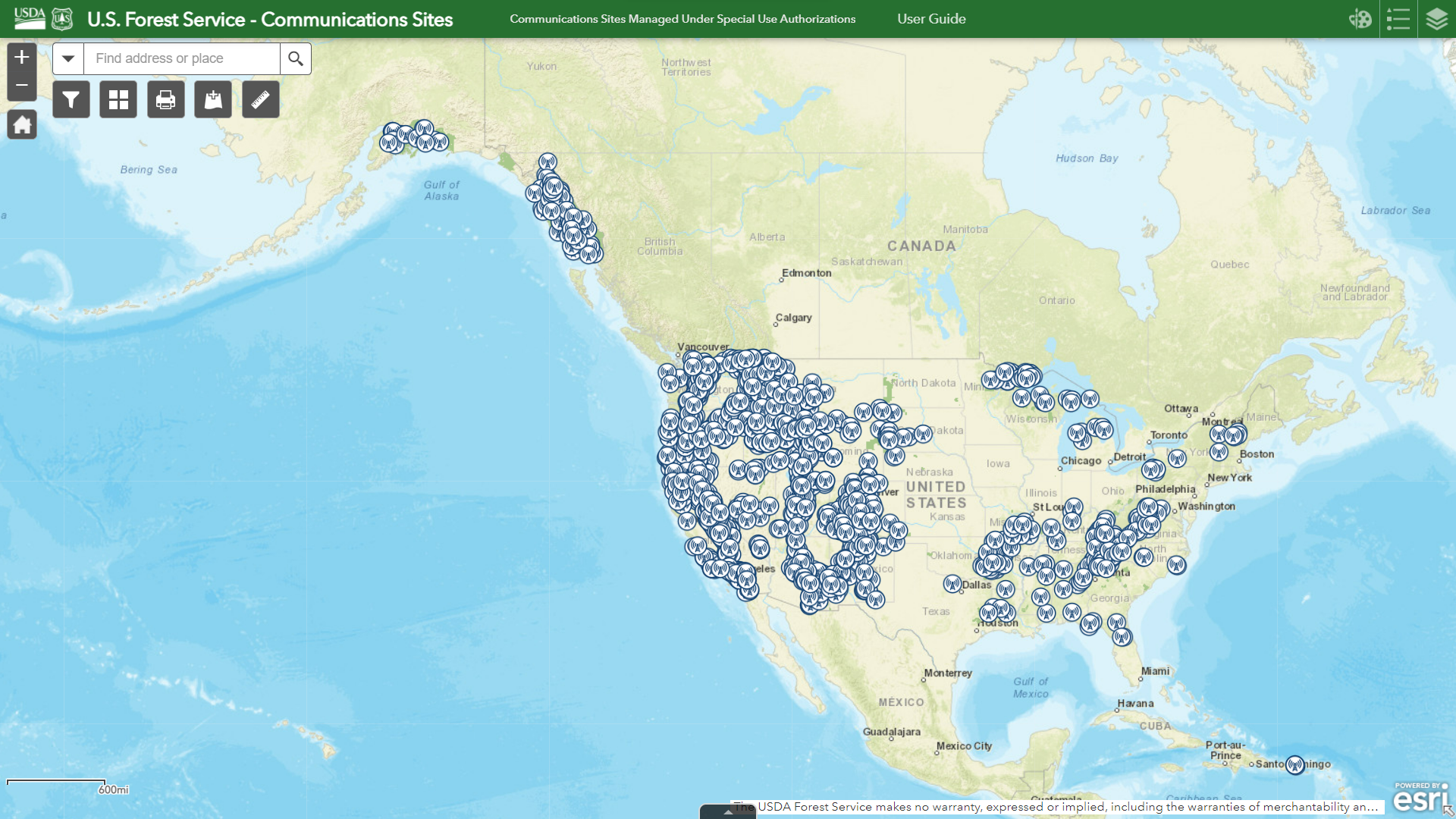NAB Opposes Forest Service Proposal to Add Comms Fee for Rural Coverage
Says $1,400 annual fee could jeopardize small broadcast operations

WASHINGTON—NAB has told the FCC that it opposes a proposal from the Forest Service to assess an annual programmatic fee on communication uses to cover the Forest Service’s costs of administering its communications use program.
“NAB believes the Forest Service’s current proposal is unlawful, inequitable, and undermines the public interest," the association told the commission in comments filed this week. “Citing the ‘need for wireless connectivity for teleworking, tele-education, telehealth, and telemedicine,’ and the need for the Forest Service to ‘do its part by ensuring it has the necessary staff and expertise to administer its communications use program,’ the Proposed Rule seeks to collect an additional ‘annual programmatic administrative fee of $1,400 per communications use authorization for wireless uses such as television and radio broadcasting, cellular telephone, and microwave’ to cover the costs of administering the Forest Service’s communications use program."
NAB said the proposed fee would increase the total fee liability for existing broadcast uses serving smaller communities by nearly eight-fold in some cases, threatening their economic viability and potentially resulting in the loss of essential broadcast services in rural and remote areas.
“While NAB agrees that providing increased broadband access to rural communities is an important objective, the Proposed Rule undermines television viewers’ access to critical news and information in the process by drastically increasing the total fees broadcasters serving rural populations pay for communications use authorizations,” the association said. “Over-the-air broadcast television and radio are important sources of news and information to Americans, particularly for households with limited income in rural and tribal areas.”
NAB noted that while some "full-power” broadcasters successfully serve large populations from communications sites on Forest Service lands, such as Mt. Wilson near Los Angeles and Sandia Crest near Albuquerque, other lower-power (but still primary) broadcast stations, often family-run or non-profit, are licensed to serve small communities from Forest Service communication sites.
The association said that the fee could hamper broadcasters in meeting their public service commitments.
“Regardless of power level, all primary broadcast stations have federally-mandated coverage, program, and record-keeping requirements, making service of small communities much more economically challenging,” it said.
Get the TV Tech Newsletter
The professional video industry's #1 source for news, trends and product and tech information. Sign up below.
NAB added that its public obligations negate the idea that broadcasters could pass these increased costs on to consumers.
“Given that broadcasters are still dealing with the adverse economic impacts of the Covid-19 pandemic, such a substantial unplanned increase in fee liability will force broadcasters to make difficult decisions regarding whether it makes economic sense to maintain these operations, potentially resulting in the loss of essential broadcast services in rural and remote areas. Such an outcome would contravene federal policy to make broadcast television and radio services available throughout the nation.”
NAB suggested that the Forest Service consider alternative fee structures that would base the administrative fee on existing rules and policies tied to the highest value use, market size, and related factors to minimize the risk of disenfranchising persons located in rural areas.
“If the Forest Service nevertheless chooses to move forward with its proposal to assess the fee on existing authorizations, at a minimum it should allow for a phase-in period of five years or longer to minimize the potential harmful impacts on existing authorizations and the communities they serve,” NAB said.
Tom has covered the broadcast technology market for the past 25 years, including three years handling member communications for the National Association of Broadcasters followed by a year as editor of Video Technology News and DTV Business executive newsletters for Phillips Publishing. In 1999 he launched digitalbroadcasting.com for internet B2B portal Verticalnet. He is also a charter member of the CTA's Academy of Digital TV Pioneers. Since 2001, he has been editor-in-chief of TV Tech (www.tvtech.com), the leading source of news and information on broadcast and related media technology and is a frequent contributor and moderator to the brand’s Tech Leadership events.

